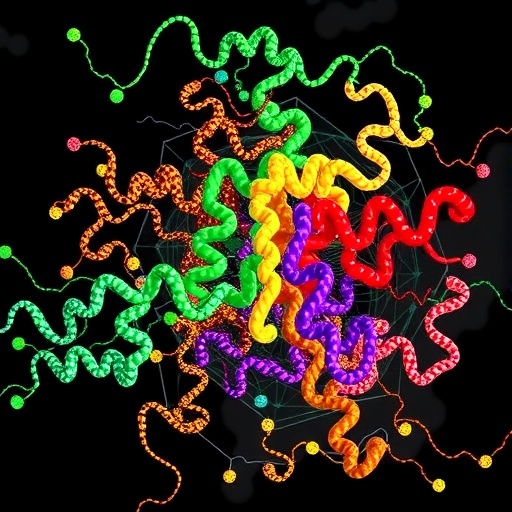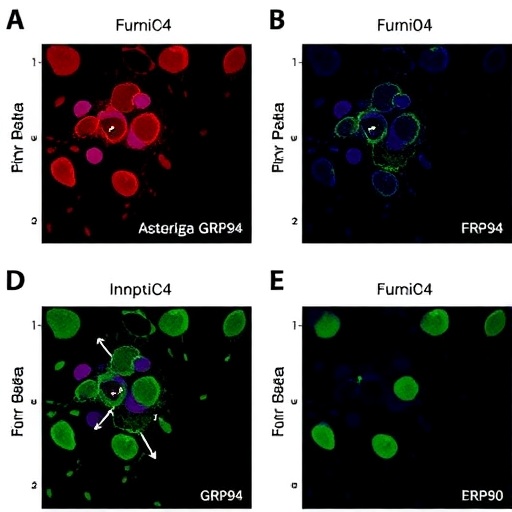Credit: City University of Hong Kong & PNAS
In a single sneeze or a cough, as many as 40,000 tiny droplets are forcibly propelled from our mouth and nose into the air. While we cannot control our sneezing, researchers from City University of Hong Kong’s (CityU) have recently developed an original method to collect micro-droplets, such as these precious human dewdrops, which may shed light on applications in detecting disease-causing bacteria and preventing the spread of disease.
The research work led by Dr Yao Xi, Assistant Professor of the Department of Biomedical Sciences at CityU has recently been published in the scientific journal Proceedings of the National Academy of Sciences of the United States of America (PNAS), with the title “Directional pumping of water and oil microdroplets on slippery surface”.
Moving oil and water-based micro-droplets without external force in a controlled fashion can be very useful in water harvesting and biomedical analysis. But it is not as easy as seeing a lone rain drop sliding down a window pane. “Droplets in micrometre scale (one millionth of a metre) have very different properties than its larger counterparts such as teardrops. Their tiny size and light weight means that the normal pull of gravity is insignificant in moving them,” Dr Yao explains, who is the correspondence author of the paper.
There had been other efforts to collect micro-droplets. However, to do it in a controlled manner, or to move a single droplet at a specific direction, had remained a challenge for scientists.
A force enabling insects to walk on water surface
But the team’s innovative strategy to transport micro-droplets was inspired by the “capillary action” observed in nature. In nature, the capillary force is important in the transport of water and nutrients in plants. Some water-walking insects also use the capillary force to move themselves off the top of water surface and to the shore.
Capillary action means the movement of a liquid within a narrow tube, due to the surface tension of the liquid, and the adhesive forces between the liquid molecules and the tube. For example, if we observe a tube of water with a magnifier, we would see a “meniscus” – a curve in the upper surface of the water near to the surface of the tube due to the capillary force. Furthermore, the capillary action can act on a meniscus to lift the liquid up the tube without the assistance of, and in opposition to, external forces such as gravity.
Inside laboratory, Dr Yao’s team made use of this capillary force to directionally transport micro-droplets on a slippery surface. By simply printing mini-hydrogel dots embossed on a surface and then infusing a thin layer of silicone oil on it, menisci were formed around the hydrogel dots. When the surface was sprayed with aerosol micro-droplets, the droplets would move towards the dots due to the capillary force.
Applicable to different liquids
This strategy have several advantages. Dr Yao’s team found that it is applicable to all liquid droplets, including both water and oil, which are immiscible with the infused oil. The strength of the capillary force is determined by the meniscus length. So an effective distance range of how far a micro-droplet can be collected can be estimated. Also, the movement is continuous and there is no risk of “saturation”. As long as the droplets are within the effective distance range, all of them will be collected accordingly.
What’s more, this strategy– unlike other previous attempts– works well even with just a single micro-droplet which helps to identify the mechanism of the movement.
The low fabrication cost, its wide choices of manufacturing materials and compatibility with various liquid droplets can pave the way for further research on different applications, including fog collection, water harvesting, heat exchangers, microfluidics, and especially biomedical analysis or even bacterial killing.
Potential biomedical applications
In their study, Dr Yao’s team used droplet containing either E. coli or S. aureus bacteria to demonstrate the potential application. They found that once collected in the hydrogel dots, it was easier to detect the bacteria in the droplets, which could not be easily detected in its otherwise wildly scattered form.
“Imagine in an enclosed area,” says Dr Yao, “if we can apply this simple yet robust technology to help identify the disease-causing bacteria. Or, to go even further, imagine if we can kill these bacteria by injecting biocides on the gathering hydrogel dot beforehand, it will be very practical in a populated area to prevent the spread of infectious disease.”
The first authors of the paper are Jiang Jieke, postgraduate student at CityU’s Department of Biomedical Sciences, and Dr Gao Jun, postdoctoral fellow at the Netherland’s University of Twente’s Physics of Complex Fluids. Other researchers include Zhang Hengdi, He Wenqing and Zhang Jianqiang from CityU’s Department of Biomedical Sciences, and Dr Dan Daniel from Institute of Materials Research and Engineering in Singapore.
###
Media Contact
P.K. Lee
[email protected]
852-344-28925
Related Journal Article
http://dx.




